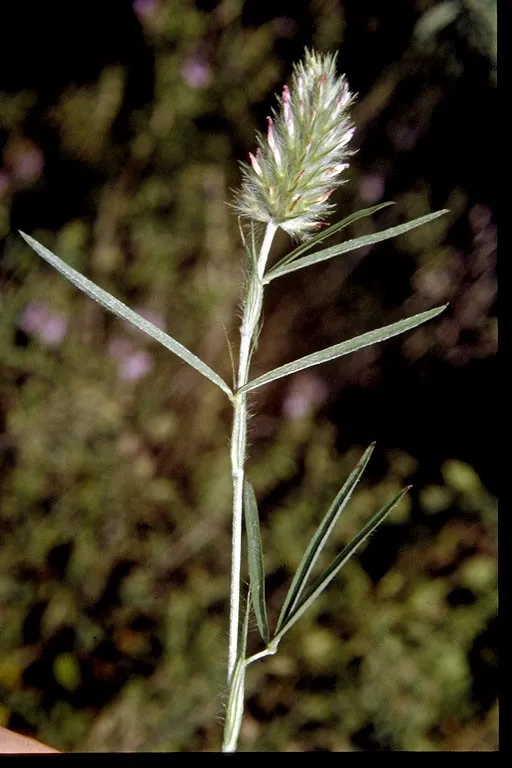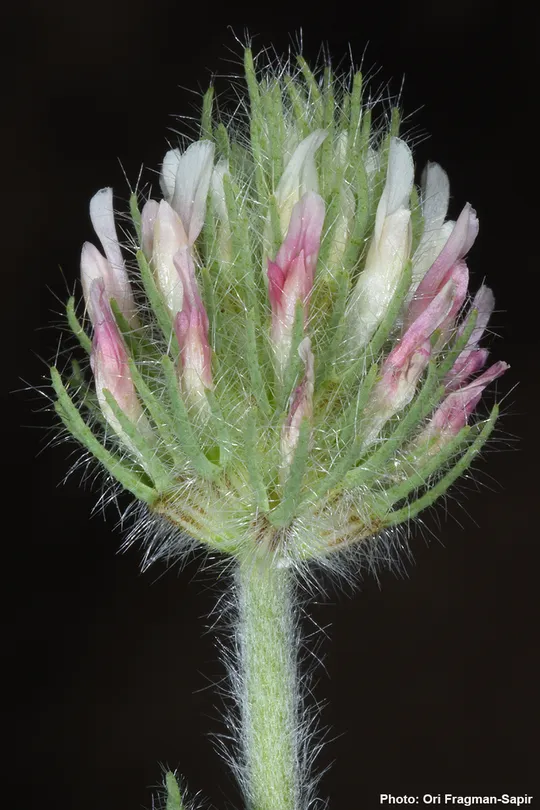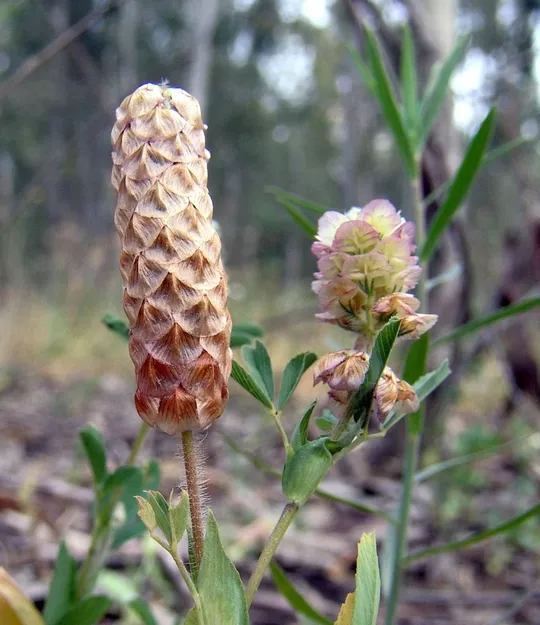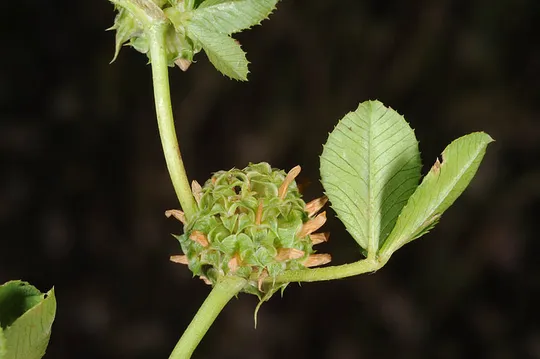Narrow-leaved Clover, Narrowleaf Crimson Clover
Trifolium angustifolium




Trifolium
angustifolium grows in the Carmel, in the Acre Valley
and on the lower Hermon at a total of three sites. The German botanist
Bornmüler first discovered it in Israel on the Carmel in 1897 and it has not
been collected since and is considered to be
extinct, or as an episodic event of long distance dispersal. Yoav
Gertman rediscovered T. angustifolium in Wadi
Nesher near the entrance to the cemetery, in 1996, nearly one hundred years
after Bornmüler. This is an indication that at least some of the annual species
that are considered episodic in Israel, actually maintain permanent populations
that survive via their seed bank in the soil.
Yair or discovered
the site in the Acre Valley in 2007 in the Kishon Estuary by. On Mount Keta, on
the low Hermon, there is a large permanent population, which Yair Or discovered
in 2008.
Trifolium
angustifolium is extremely rare in Israel. So far it
has been found mainly in disturbed habitats by the side of the road to the
Nesher quarry on the northern Carmel, at a place where a grove of Quercus
calliprinos oak grows. In the Kishon Estuary it grows on a sandy degraded site.
An additional habitat is on exposed sand stone rich in marl near Mount Keta at
the foot of Mount Hermon at an altitude of 1100 meters, where it grows in a Sarcopoterium
spinosum and Lavandula stoechas scrubland.
For the genus Trifolium – see T. micranthum.
T. angustifolium
belongs to the T. purpureum
group which constitutes a sub-section of the large Trifolium section.
This group includes ten annual Trifolium species that
have purple-violet flowers, seven of which grow in Israel. T. angustifolium
differs from the other species in the group – T. purpureum, T. palaestinum,
T. blancheanum, T. dichroanthum, T. dasyurum and T. prophetarum, by
its narrow leaflets. This is very close
species but distinct and sympatric (overlapping distribution) from T.
purpureum, one of the common Trifolium species in
Israel that forms spectacular purple expanses at the height of spring in Israel's
Mediterranean region. The Levant is the speciation center of the group. Some of
the species have a sympatric distribution pattern (T. dasyurum, T.
angustifolium, T. purpureum) and others have an allopatric distribution
pattern (separate geographic distribution) (T. palaestinum versus T.
purpureum and T. blancheanum).
·
In the distant
past Trifolium angustifolium was known from only
one site on the Carmel and is considered extinct. The number of regions and the
currently known sites (three) are greater than in the past, and this is
probably due to renewed discovery or from its appearance from within an existing
seed bank and not from episodic establishment resulting from long distance dispersal.
·
T. angustifolium
population sizes range from tens to hundreds of plants.
In the Carmel in 1997, 800 plants were counted and in 2007, 40 plants were
observed in the Kishon.
·
The plant grows
in areas affected by human activity and development activity may eliminate the
populations in the Carmel and the Kishon.
·
T. angustifolium is not protected in a nature reserve.
·
It is common
outside Israel and is not in considered globally endangered.
Known T. angustifolium populations should be monitored. Efforts should be made to locate the
species in additional places.
Trifolium
angustifolium is a widely distributed species found in
the northern Mediterranean from the Iberian Peninsula throughout the eastern
Mediterranean countries and the Aegean Islands and eastwards to Syria, Lebanon
and northern Iran to the Caucasus. In Europe it also grows in Austria, former
Yugoslavia, and the Crimean Peninsula and Macaronesia. T.
angustifolium is not found in Jordan (the datum from the
Wadi el Hidan Canyon is mistaken – it is T. dasyurum).
Trifolium
angustifolium is an extremely rare annual grass of slightly disturbed
places in northern Israel, which was considered extinct but was found again in the
Carmel and the Kishon in recent years.
שמידע, א. 1985. ממדף הספרים: מונוגרפיה של הסוג תלתן בעולם, מאת- מיכאל זהרי ודוד הלר. רתם 17: 54-72.
שמידע, א. וגרטמן, י. 1996. תלתן צר-עלים - צמח נדיר מאוד בסכנת הכחדה בישראל. כתב-יד.
Zohary M. and D.Heller 1984, The Genus Trifolium. Israel Academy of Sciences and Humanities.
Current Occupancy Map
| 1000 squre meter pixel | 5000 squre meter pixel | 10000 squre meter pixel | |
|---|---|---|---|
| number of observations | 0 | 0 | 0 |
| in total pixels | 0 | 0 | 0 |
| Family | Fabaceae |
| Classification | On the endangered species list |
| Ecosystem | Mediterranean |
| Chorotype | Mediterranean (Western Irano-Turanian) |
| Conservation Site | Wadi Nesher |
| Rarity |
1
5
6
|
|---|---|
| Vulnerability |
0
1
4
|
| Attractiveness |
0
0
4
|
| Endemism |
0
0
4
|
| Red number |
1
3.7
10
|
| Peripherality | N |
| IUCN category | DD EW EX LC CR EN VU NT |
| Threat Definition according to the red book | Vulnerable |
 Based on:
Based on:






